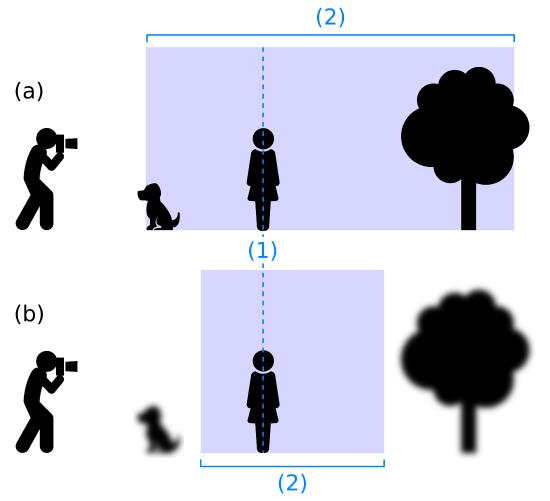7.5: Depth of Field
- Page ID
- 124336
What is Depth of Field?
Depth of Field is the area in which objects appear in focus. A shot can have a wide depth of field where everything in the frame is in focus, like a beautiful landscape, or you can have a shallow depth of field where the subject appears in focus while everything in front or behind the subject is out of focus (See Figure 7.5.1). There are three things that control the depth of field, the aperture/iris, the focal length of the lens, and the distance of the subject to the camera. We will discuss each control individually.

Aperture/Iris
In the previous section, we went over f-stops, which is the measurement of the opening of the iris in the camera. When you have a low f-stop, like F2.8, you will have a narrower depth of field. Conversely, when you have a higher f-stop, like F16, you will have a wider depth of field.
Focal Length
Using a zoom lens, the more you are zoomed into a shot (longer focal length), the narrower your depth of field. The more zoomed out you are (shorter focal length), the narrower the depth of field. The same is true of prime lenses. When you use a 100mm lens, it will have a narrower depth of field. A 15mm lens will have a wider depth of field.
Distance of Subject to Camera
This refers to the distance between the camera and the subject in focus. When the subject is closer to the camera, you will have a narrower depth of field and things behind it will appear out of focus. When the subject is further away from the camera, you will have a wider depth of field.


